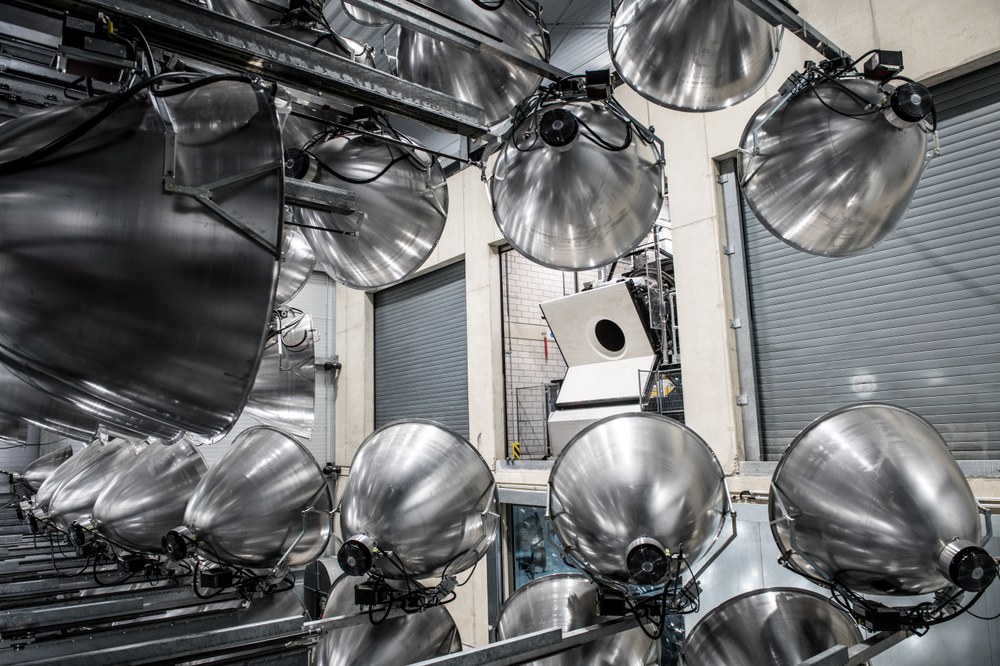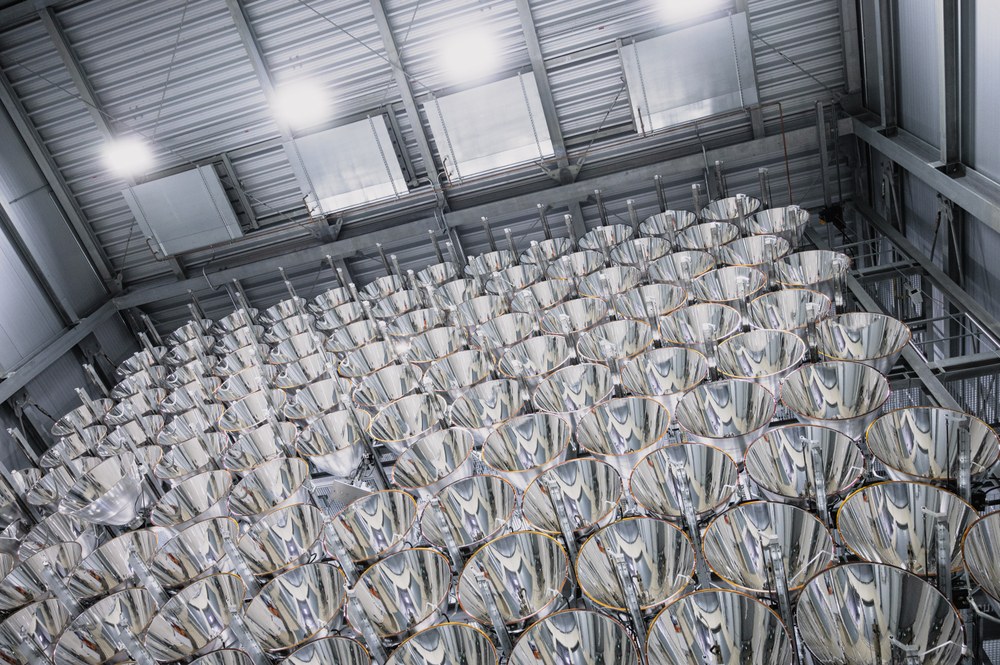Synlight®

At the DLR site in Jülich, the Institute of Future Fuels operates a globally unique facility: the Synlight solar simulator. Here, 149 medium-sized cinema projector lamps generate artificial sunlight with a light spectrum similar to that of natural sunlight. If they are simultaneously focussed on a small area, the concentrated radiation is up to 10,000 times more intense than natural solar radiation on the earth's surface.
Possible applications and technical key figures
The facility was developed primarily for testing new solar processes for the CO2-neutral production of hydrogen and fuels. Synlight offers researchers from DLR, other research institutions and industrial companies ideal conditions for solar irradiation tests of test setups on an industrial scale.
Another area of application is testing components for solar thermal power plants or for the aerospace industry.
In the Synlight building, the processes and components can be tested under the same solar conditions regardless of the weather and season. For this purpose, three test chambers of different sizes and equipment are located opposite the radiators. The radiators enable a total solar radiation output of up to 400 kilowatts, which can be distributed to up to three test chambers thanks to the modular system design. A special feature of Synlight is its multi-focus capability: up to three objects can be irradiated simultaneously with any desired radiation distribution.
The maximum power that can be provided for a single test is 300 kilowatts.

Two of the three test rooms have been specially designed for solar chemical applications. Gas scrubbing systems and neutralisers can be set up in a small adjoining room, allowing researchers to clean the test setups after the tests have been carried out and prepare them for subsequent tests. As all test rooms are up to four metres high or wide and completely open to the radiation hall, it is possible to irradiate correspondingly large systems in them - such as full-size solar thermal reactors or space components.
During the experiments, the radiators are aligned, started and monitored from a control room. Researchers from the DLR Institute of Future Fuels accompany and support the external users in preparing, conducting and analysing the experiments. Office workstations are available in the Synlight building for the duration of the work.



